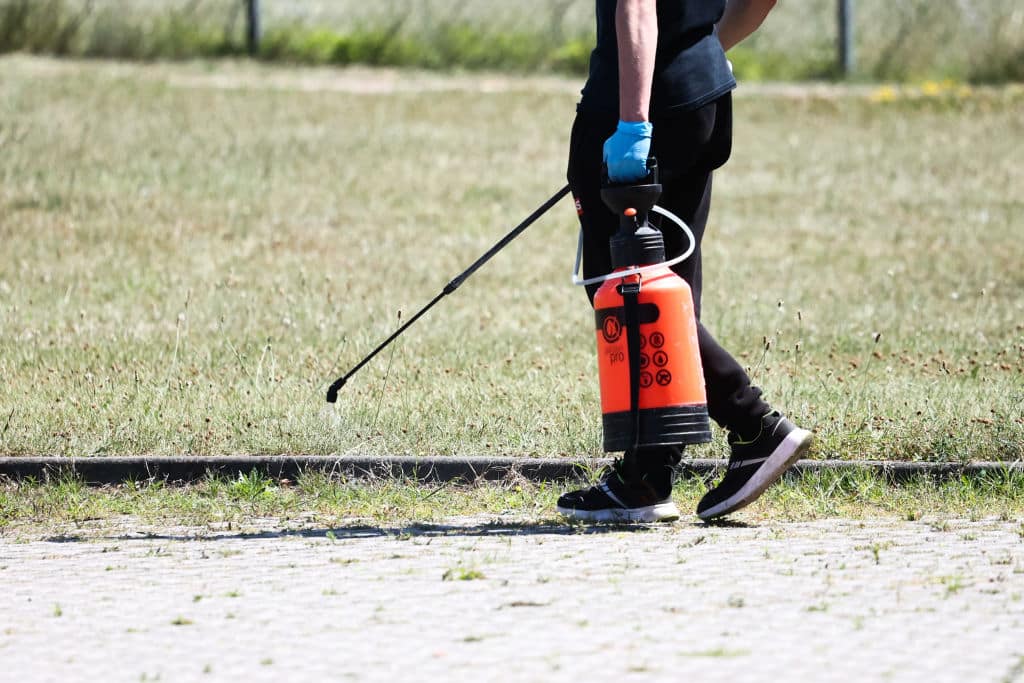Products You May Like
Jakub Porzycki / NurPhoto / Getty Images
 Why you can trust us
Why you can trust us
Founded in 2005 as an Ohio-based environmental newspaper, EcoWatch is a digital platform dedicated to publishing quality, science-based content on environmental issues, causes, and solutions.
Pesticides have been linked to a host of environmental and public health harms, from the insect apocalypse to cancer.
Now, a study published in the November issue of the Journal of Hazardous Materials Letters gives another reason to avoid insecticides in particular: they may contain the toxic forever chemicals known as Per- and Polyfluoroalkyl Substances (PFAS). The research found the PFAS known as Perfluorooctane sulfonic acid (PFOS) in six out of 10 insecticides tested at levels hundreds of thousands of times higher than the safety levels for drinking water set by the Environmental Protection Agency (EPA).
“[T]he level of PFAS absorption by plants detected in this study suggests that this exposure pathway poses a major threat to the safety of our food supply,” Public Employees for Environmental Responsibility (PEER) Executive Director Tim Whitehouse wrote in a letter to EPA administrator Michael Regan. “For this reason, it is quite possible that PFAS in our food is a bigger PFAS exposure pathway than water.”
The research was spurred by a troubling finding in another study as researchers were preparing to measure the degree to which plants might absorb PFAS contamination, according to the paper. Those researchers found that there was PFAS contamination even in the U.S. Department of Agriculture (USDA) greenhouse plants that were supposed to be the control in the experiment. Further testing revealed PFAS contamination in the greenhouse’s soil, plants and insecticides.
The new paper followed up by testing 10 “widely used” insecticides for PFAS, environmental toxicologist and lead author Steve Lasee told The Guardian. Lasee, who was at Texas Tech University at the time of the study and is now an independent consultant and EPA research fellow, said that they found “screamingly high” levels of PFOS in six of the 10 insecticides. In June, the EPA set a safety limit for PFOS in drinking water at 0.02 parts per trillion (ppt), PEER pointed out in a press release about the findings, but the PFOS was found in the pesticides at levels ranging from 3,920,000 to 19,200,000 ppt.
“We know PFOS is a carcinogen, we know it’s a deadly chemical and there’s no safe level in drinking water,” PEER science policy director Kyla Bennett told The Guardian. “Our soil and water are now contaminated.”
The study also found signs of PFAS that were not among the 24 chemicals targeted for initial analysis in seven of the 10 insecticides, according to the paper.
The research casts doubt on the EPA’s effectiveness at regulating the use of PFAS in pesticides. The agency has researched the presence of PFAS in pesticide containers and invited public comment in September on a plan to ban 12 PFAS previously approved as inert ingredients in pesticides, according to its website. However, it claimed that the chemicals targeted by the proposed ban were not currently in use by any registered pesticide. Lasee told The Guardian that the EPA had been aware of his findings since March, when he presented them to agency scientists. He received one request for another presentation that was never followed up on and no requests for the brand names of the pesticides in the study. One of the tested insecticides was malathion, which is one of the most commonly used worldwide, according to PEER.
“If the intent was to spread PFAS contamination across the globe there would be few more effective methods than lacing pesticides with PFAS,” Bennett said in the press release. “These findings point to an appalling regulatory breakdown by EPA.”
In response to the study, Whitehouse called on Regan and the EPA to take three steps:
- Mandate that every pesticide manufacturer test their products for PFAS and back that up with agency testing.
- Ban all pesticides containing PFAS.
- Delete all agency statements saying that there are no PFAS in registered pesticides until testing is complete.
Bennett told The Guardian that concerned individuals could protect themselves by eating organic food, but acknowledged that not everyone can afford that option and that the EPA should step up to protect consumers.
“We have to get the EPA to stop allowing PFAS in pesticides,” she said. “We’ve got a toxic chemical in them that doesn’t need to be there, and pesticides are bad enough on their own without adding another carcinogen.”
Subscribe to get exclusive updates in our daily newsletter!
By signing up, you agree to the Terms of Use and Privacy Policy & to receive electronic communications from EcoWatch Media Group, which may include marketing promotions, advertisements and sponsored content.
